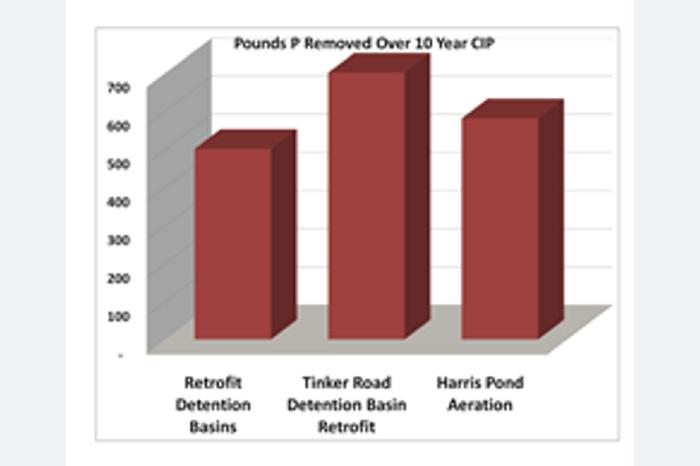Pennichuck Water works watershed management planning and CIP
Back to ProjectProject Description
For nearly two decades, CEI has been assisting Pennichuck Water Works with its Watershed Restoration efforts, beginning with the preparation of its 1998 Watershed Management Plan. The implementation of the 1998 Plan was highly successful, occurring from 1998 until 2007; however, the effectiveness was not quantified due to a lack of monitoring and other data. As a result, CEI created an updated ten-year watershed restoration program to provide that quantification and to meet EPA’s new guidance on Watershed Planning (nine minimum elements (a-i)) using funds under the s.319 grant program.
This ‘first of its kind’ project resulted in an innovative, completely quantitative Watershed Restoration Plan. Partially funded by NH DES, CEI developed and calibrated a comprehensive water quality and flow model, matched to real time flow data collected through watershed wide data loggers. The element Phosphorus, key to the cyanobacteria blooms that had occurred in the downstream ponds, was also calibrated to data collected from critical tributaries in the watershed during dry and wet weather sampling events. Proposed restoration solutions were then modeled quantitatively to match a water quality goal – something no one had accomplished before. A 10-year, $2 million dollar Capital Improvement Plan (CIP) resulted from this effort.
The Capital Improvement and O&M Plan is unusual and innovative because it ties phosphorus removals quantitatively to a calibrated model that will help evaluate whether loads are being reduced to the extent predicted. Dataloggers and automatic samplers were used in key locations throughout the watershed to collect flow and quality data, supplemented by grab samples from a volunteer monitoring group. Existing innovative and traditional stormwater practices were also monitored throughout the watershed to calculate effectiveness. EPA’s Storm Water Management Model (SWMM) was then set up to match the observed flow and quality data in a complex calibration that accounted for several large storage wetlands. Once calibrated, the model was used to assess what if scenarios for stormwater improvements throughout the watershed. Phosphorus removal rates were applied to each of the stormwater improvements proposed to see what combination of structural and non-structural practices would meet load reduction goals through buildout. A 10-year CIP was used because continuous monitoring would help gauge the effectiveness of techniques and the program can then be revised to adjust calibration and removal efficiencies. The advantage of tying phosphorus removals to capital and O&M improvements was to focus on the most cost effective pollutant removal on a dollar per pound calculation.To our knowledge as confirmed by NHDES and USEPA, this had never been done before.
The quantitative plan allows Pennichuck Water Works to obtain s.319 grant funds for implementation, which have been sought and received for numerous projects performed throughout the watershed. The Plan continues to serve as a living document with recent updates to reflect more recent water quality data, measures that have been implemented in the watershed, and updated recommendations.
For questions regarding these projects or CEI's environmental services in general, feel free to contact CEI Principal Stephanie Hanson at [email protected]



